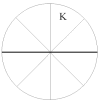Costs of a predictable switch between simple cognitive tasks following severe closed-head injury
- PMID: 17100512
- PMCID: PMC1779821
- DOI: 10.1037/0894-4105.20.6.675
Costs of a predictable switch between simple cognitive tasks following severe closed-head injury
Abstract
The authors used a predictable, externally cued task-switching paradigm to investigate executive control in a severe closed-head injury (CHI) population. Eighteen individuals with severe CHI and 18 controls switched between classifying whether a digit was odd or even and whether a letter was a consonant or vowel on every 4th trial. The target stimuli appeared in a circle divided into 8 equivalent parts. Presentation of the stimuli rotated clockwise. Participants performed the switching task at both a short (200 ms) and a long (1,000 ms) preparatory interval. Although the participants with CHI exhibited slower response times and greater switch costs, similar to controls, additional preparatory time reduced the switch costs, and the switch costs were limited to the 1st trial in the run. These findings indicate that participants with severe CHI were able to take advantage of time to prepare for the task switch, and the executive control processes involved in the switch costs were completed before the 1st trial of the run ended.
Figures


Similar articles
-
Task switching in mild cognitive impairment: switch and nonswitch costs.J Int Neuropsychol Soc. 2009 Jan;15(1):103-11. doi: 10.1017/S1355617708090140. J Int Neuropsychol Soc. 2009. PMID: 19128533
-
Closed head injury and perceptual processing in dual-task situations.Exp Brain Res. 2005 Jan;160(2):223-34. doi: 10.1007/s00221-004-2006-y. Epub 2004 Aug 24. Exp Brain Res. 2005. PMID: 15338087
-
Executive functioning following mild closed head injury.Cortex. 1996 Jun;32(2):261-78. doi: 10.1016/s0010-9452(96)80050-5. Cortex. 1996. PMID: 8800614 Clinical Trial.
-
Attentional deficits in patients with closed head injury: a further study to the discriminative validity of the test of everyday attention.Brain Inj. 2000 Mar;14(3):227-36. doi: 10.1080/026990500120709. Brain Inj. 2000. PMID: 10759040
-
Predictive alternating runs and random task-switching sequences produce dissociative switch costs in the Consonant-Vowel/Odd-Even task.Cogn Process. 2025 Feb;26(1):157-170. doi: 10.1007/s10339-024-01236-7. Epub 2024 Oct 25. Cogn Process. 2025. PMID: 39455504
Cited by
-
The effects of transcranial magnetic stimulation on cognitive flexibility among undergraduates with insomnia symptoms: A prospective, single-blind, randomized control trial.Int J Clin Health Psychol. 2025 Apr-Jun;25(2):100567. doi: 10.1016/j.ijchp.2025.100567. Epub 2025 Apr 14. Int J Clin Health Psychol. 2025. PMID: 40276332 Free PMC article.
-
Executive dysfunction assessed with a task-switching task following concussion.PLoS One. 2014 Mar 11;9(3):e91379. doi: 10.1371/journal.pone.0091379. eCollection 2014. PLoS One. 2014. PMID: 24618717 Free PMC article.
-
Learned Irrelevance, Perseveration, and Cognitive Aging: A Cross-Sectional Study of Cognitively Unimpaired Older Adults.Brain Sci. 2023 Mar 10;13(3):473. doi: 10.3390/brainsci13030473. Brain Sci. 2023. PMID: 36979283 Free PMC article.
-
The effects of sleep deprivation on cognitive flexibility: a scoping review of outcomes and biological mechanisms.Front Neurosci. 2025 Jul 22;19:1626309. doi: 10.3389/fnins.2025.1626309. eCollection 2025. Front Neurosci. 2025. PMID: 40766906 Free PMC article. Review.
-
The mapping between transformed reaction time costs and models of processing in aging and cognition.Psychol Aging. 2018 Nov;33(7):1093-1104. doi: 10.1037/pag0000298. Epub 2018 Oct 8. Psychol Aging. 2018. PMID: 30299155 Free PMC article.
References
-
- Allport DA, Styles EA, Hsieh S. Shifting intentional set: Exploring the dynamic control of tasks. In: Umilta C, Moscovitch M, editors. Attention and performance XV: Conscious and nonconscious information processing. Cambridge, MA: MIT Press; 1994. pp. 421–452.
-
- Allport DA, Wylie GR. Task-switching: Positive and negative priming of task set. In: Humphreys GW, Duncan J, Treisman AM, editors. Attention, space, and action: Studies in cognitive neuroscience. Oxford, England: Oxford University Press; 1999. pp. 273–296.
-
- Allport DA, Wylie GR. Task-switching, stimulus–response bindings, and negative priming. In: Monsell S, Driver J, editors. Attention and performance XVIII: Cognitive control. Cambridge, MA: MIT Press; 2000. pp. 35–70.
-
- Altmann EM. Advance preparation in task switching. Psychological Science. 2004;15:616–622. - PubMed
-
- Baddeley AD. Working memory. Oxford, England: Oxford University Press; 1986.

